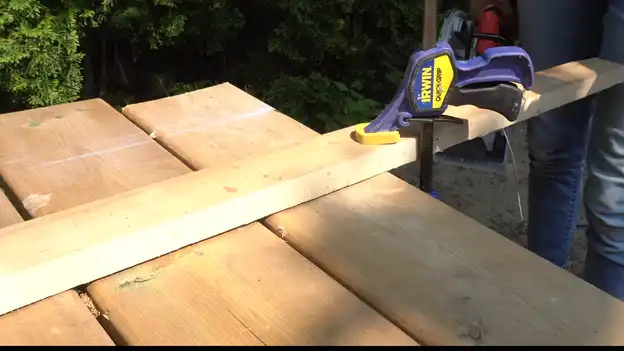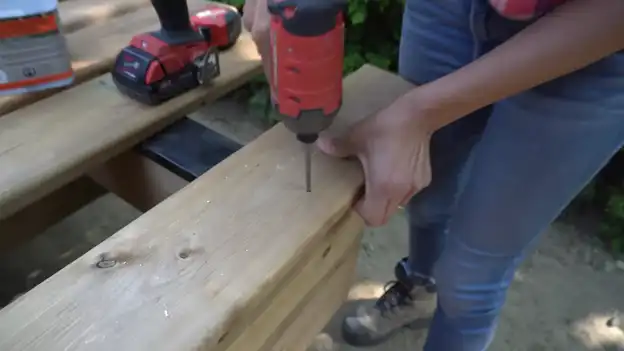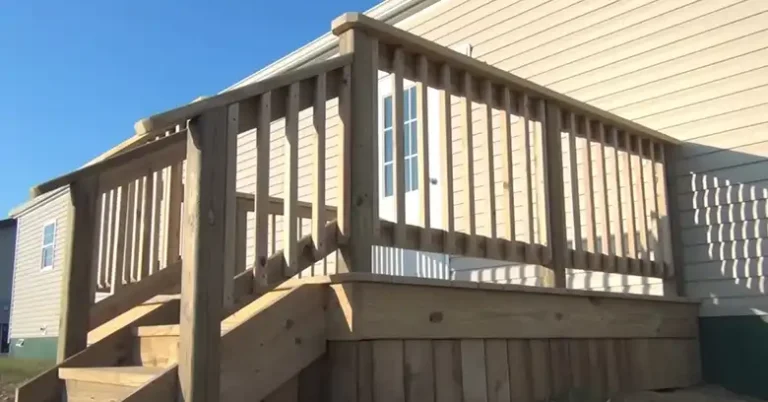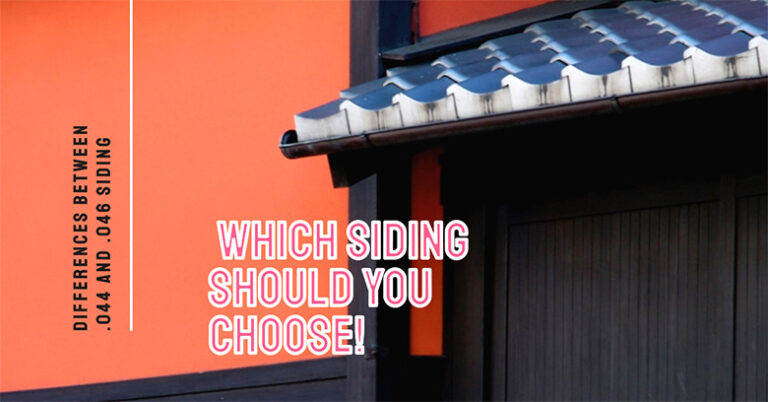2×6 Decking vs. 5/4: A Detailed Comparison
Choosing the right decking material is crucial to ensuring a durable, attractive, and safe outdoor space. Among the most popular options are 2×6 decking and 5/4 decking, both of which have distinct advantages depending on your project’s requirements.
2×6 decking is thicker and provides more structural support, while 5/4 decking is lighter and more economical. This article will lay out the key differences between these two options, helping you make an informed decision.

2×6 Decking: Strength and Durability
2×6 decking boards, which are two inches thick and six inches wide, are commonly made of wood like cedar, pressure-treated pine, or composite materials. The main advantage of 2×6 decking is its strength, but behold, it’s not the only advantage.
- Because of the extra thickness, these boards offer excellent load-bearing capabilities, making them a top choice for projects that require added structural integrity, such as decks built at higher elevations or those intended to hold heavy furniture or foot traffic.
- The thicker boards of 2×6 decking also provide greater durability. They are less likely to warp, twist, or cup over time, especially when exposed to the elements. For homeowners seeking a long-lasting deck that will stand the test of time, 2×6 boards are a solid option.
However, the increased size and weight of 2×6 boards come at a higher cost. The boards themselves are more expensive than 5/4 decking, and the added weight means the deck’s support structure will need to be more robust, further increasing material and labor costs.
5/4 Decking: Lightweight and Affordable
5/4 decking, also known as “five-quarter” decking, refers to boards that are approximately 1 inch thick. These boards are typically made from the same materials as 2×6 decking, such as pressure-treated lumber or composite materials, but they are thinner and lighter.
- One of the key advantages of 5/4 decking is its affordability. The thinner boards use less material, making them a budget-friendly option for homeowners looking to build a deck without sacrificing quality. Additionally, the lighter weight of 5/4 boards makes them easier to handle and install, reducing labor time and effort.
- Though 5/4 decking is not as thick or strong as 2×6, it is perfectly suitable for most residential deck projects. When properly installed with the correct spacing and joist support, 5/4 decking can easily handle typical foot traffic and outdoor furniture.
However, for decks intended to support heavier loads or elevated structures, 5/4 decking may require additional joists or support beams.
What Is the Difference Between 2×6 and 5 4 Deck Boards?
Below are the key differences between these two board sizes to help you make an informed decision for your deck project.
Dimensions and Appearance
2×6 Decking:
- Actual dimension: Approximately 1.5 inches thick by 5.5 inches wide.
- Offers a thicker, sturdier appearance due to its heftier profile.
- Commonly used in construction projects where a robust, heavy-duty look is desired.
- Available in various wood types like pressure-treated pine, cedar, and redwood, as well as composite options.
5/4 Decking:
- Actual dimension: Approximately 1 inch thick by 5.5 inches wide.
- Slightly thinner than 2×6, giving a more refined and modern look.
- Typically chosen for its smoother appearance and easier installation.
- Commonly used for residential decks and is available in pressure-treated wood, cedar, composite, or tropical hardwoods like ipe.
Strength and Durability
2×6 Decking:
- Strength: The thicker profile of 2×6 decking gives it superior strength, making it ideal for decks that need to support heavier loads or are placed in areas with high traffic.
- Durability: Because of its thickness, 2×6 decking is generally more durable and less prone to warping, cracking, or bowing over time, especially when exposed to moisture or extreme weather conditions.
- Span: A 2×6 board can span greater distances between joists, sometimes up to 24 inches apart, reducing the need for as many support beams. This can save on materials and labor costs.

5/4 Decking:
- Strength: While still sturdy, 5/4 decking is not as robust as 2×6, making it more suited for residential decks without extreme load-bearing requirements.
- Durability: Although thinner, 5/4 decking can still last for many years when properly maintained. However, it may be more susceptible to wear and tear, especially in heavy-use or high-moisture environments.
- Span: Typically, 5/4 decking should be installed with joists spaced no more than 16 inches apart to prevent sagging or bending.

Cost
2×6 Decking:
- Upfront Costs: Generally more expensive due to its larger size and greater material usage. The cost of 2×6 boards also depends on the wood species or whether you’re opting for a composite option.
- Long-term Costs: Due to its durability and strength, 2×6 decking may require fewer repairs or replacements over time, potentially saving you money in the long run.
5/4 Decking:
- Upfront Costs: Usually cheaper than 2×6 decking, making it a budget-friendly option for most homeowners.
- Long-term Costs: Since 5/4 decking can be more prone to damage, it may require more frequent maintenance, staining, or repairs, especially in harsh climates.
Installation
2×6 Decking:
- Ease of Installation: Heavier and bulkier than 5/4 decking, so it can be more difficult to handle during installation. You may need more labor or specialized tools to work with the thicker boards.
- Time: The fewer joists required for 2×6 decking can reduce installation time slightly, though the heavier boards may slow down the overall process.

5/4 Decking:
- Ease of Installation: Lighter and easier to work with, making installation quicker and more manageable for DIY projects.
- Time: Requires more joists due to the thinner profile, but its light weight can make it faster to install than 2×6 boards.

Aesthetics
2×6 Decking:
- The thicker boards can give your deck a more rugged, rustic appearance, especially in natural wood types like cedar or redwood. This may be appealing if you’re going for a classic or log-cabin style deck.
- Wider spacing between boards can allow for better airflow and water drainage, which can help keep the deck drier.
5/4 Decking:
- Offers a sleeker, more modern look. The thinner boards and closer joist spacing provide a more refined finish, which can appeal to those looking for a contemporary design.
- With the right finish and care, 5/4 decking can maintain a smooth surface that is pleasing to the eye and comfortable underfoot.
Maintenance and Lifespan
When it comes to lifespan, the difference between 2×6 and 5/4 decking largely depends on the materials used and the level of maintenance. Pressure-treated wood and cedar decks can last anywhere from 10 to 30 years with proper care. Composite decking, while more expensive, can last even longer, with many products offering warranties of 25 years or more.
Since 2×6 decking is thicker, it may have a slight edge in longevity, especially in environments prone to moisture or heavy foot traffic. The thicker boards are less likely to show wear and tear over time, but 5/4 decking can still provide a long-lasting solution when installed and maintained correctly.
2×6 decking vs 5/4: Which Should You Choose?
Deciding between 2×6 and 5/4 decking ultimately depends on your project’s specific needs. If strength, durability, and longevity are your primary concerns, and you are willing to invest in a sturdier deck, 2×6 decking is the ideal choice.
On the other hand, if you’re working within a budget and want a cost-effective solution for a standard residential deck, 5/4 decking offers great value without compromising on quality.
Both options have their merits, but understanding the structural demands of your deck and the look you wish to achieve will guide you toward the best choice.
If you’re still confused, here’s a summary of the differences for you to have a look again.
| Feature | 2×6 Decking | 5/4 Decking |
| Actual Dimensions | 1.5 inches thick by 5.5 inches wide | 1 inch thick by 5.5 inches wide |
| Appearance | Thicker, more rugged look | Sleeker, more refined look |
| Strength | More robust, can support heavier loads | Sufficient for residential use, but less strong |
| Durability | More resistant to warping and cracking | May wear faster, requires regular maintenance |
| Joist Span | Up to 24 inches apart | Maximum 16 inches apart |
| Cost | More expensive upfront | Typically less expensive |
| Ease of Installation | Heavier, harder to handle, but fewer joists needed | Lighter, easier to install but requires more joists |
| Aesthetic Style | Traditional, rustic look | Modern, smooth, and polished finish |
| Maintenance | Regular maintenance required for natural wood | Regular maintenance required for natural wood |
| Ideal Usage | High-traffic or large decks, heavy-duty projects | Residential decks with moderate use |
| Material Options | Pressure-treated wood, cedar, redwood, composite | Pressure-treated wood, cedar, tropical hardwoods, composite |
Frequently Asked Questions
Are 2×6 strong enough for a deck?
Each 2×6 steel joist is as strong as a 2×10 wood joist, so you can use them to span a greater distance without making them thicker. Steel joists can be placed 12, 16, 20, or even 24 inches apart, depending on how much weight the deck needs to hold.
How far can I span a 2×6 on a deck?
Larger joists can cover a wider area. For example, a 2×6 joist can span up to 12 feet and 6 inches, while a 2×10 joist can span up to 21 feet.
Conclusion
For homeowners seeking a balance between cost, appearance, and long-term durability, the right choice will depend on the project scope, climate, and desired look. Ultimately, both 2×6 and 5/4 deckings can result in a beautiful and functional outdoor space with the proper care.




